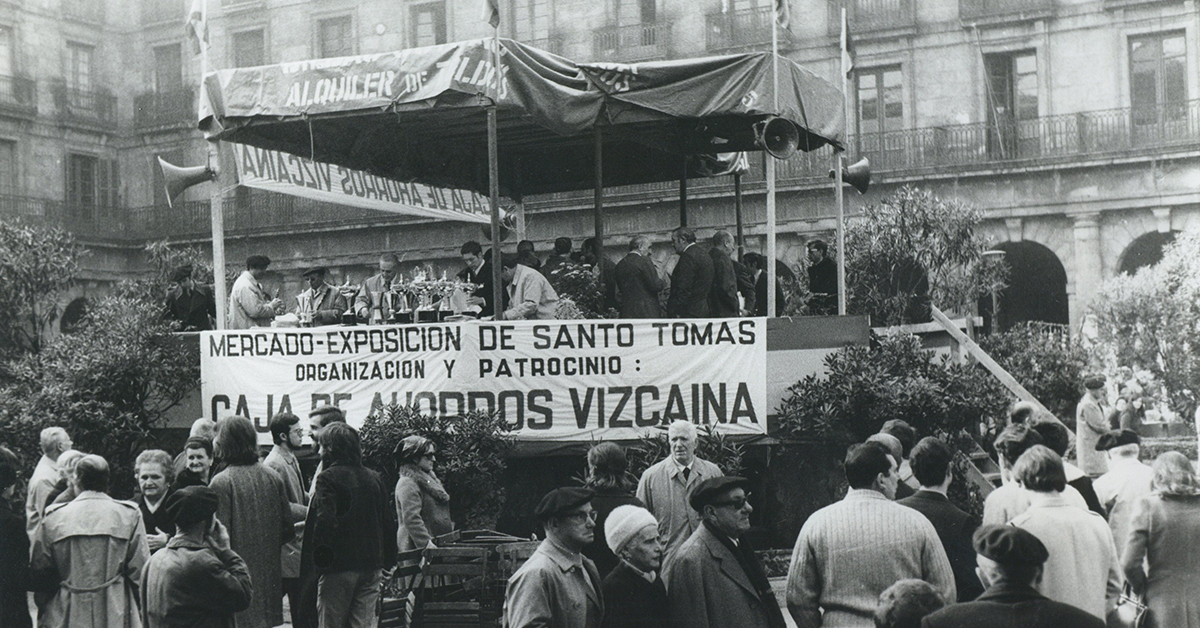Basque ethnography at a glance
On 21 December, as every year, El Arenal and the Plaza Nueva square in Bilbao will be teeming with people enjoying the festive atmosphere of St. Thomas’s Market. Continuing a decades-long tradition, the baserritarras (farmers) and smallholders of Bizkaia will be there to showcase their best produce and thus bring the urban and rural worlds closer together.
This tradition dates back at least to the 19th century, when the tenant farmers went to the city to pay the annual rent to the owners of their farmsteads, the majority of whom lived in Bilbao. Given the closeness to Christmas, along with paying the rent, the tenants would gift the landlords a selection of the best produce from their land and their barnyards, as well as pork delicacies. According to the people interviewed, the farmers were treated to a lunch or a meal in return.
The trip to Bilbao was the chance for farmers to sell vegetables, eggs, capons, cockerels, etc. and thus supply the city dwellers with Christmas fare. They spent the money earned on the typical salt cod and if any money was left, some Christmas nougat and marzipan for the children of the household.
They would sell their wares in the Playa Mayor, the city’s main square and now La Ribera Market, until Félix García Arzeluz (1869-1920), an author on local customs from Bilbao, decided to organise a market-exhibition in the Plaza Nueva in 1915.
From 1945 onwards, the market was organised and sponsored by the Caja de Ahorros Vizcaina, the forerunner of the current BBK which continues in that role. The Market has evolved over time and its display area has spread into El Arenal. Prizes are now given to the best produce in different sections: vegetables, fruit, cheese, honey, cider, Txakoli wine, etc.
A prize has been recently added for the best female baserritarra and which seeks to highlight the work of women in the primary sector.
There are currently hundreds of stands with all kinds of produce. Animals (capons, turkeys, chickens, hens, rabbits, etc.) used to be sold there. Buying them reared directly for the table has fallen out of fashion and people only go to look at them at the odd stand that continues to show them. As in so many other ways, Christmas customs and menus have also changed.
The market is now mainly a festive occasion, where thousands of people flock to the city centre to enjoy the day. There is also a full programme of activities. It undeniably has become a real tradition on the calendar.
Akaitze Kamiruaga
Popular Cultural Heritage Department – Labayru Fundazioa



